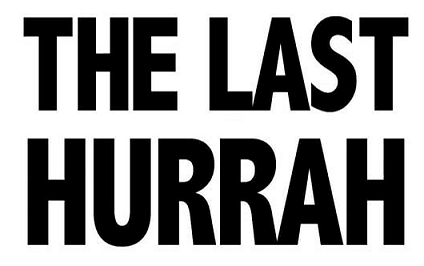
Ron Meisels says market could go up another 10% before bears take charge
We’ve heard it over and over again, for years: This bull market is getting long in the tooth.
It just celebrated its eighth birthday. The S&P 500 (SPX) and Dow Jones Industrials (DJIA) have more than tripled. It’s the second longest bull market in history, yet, as Bloomberg News wrote, “it has been derided as fake, doomed and history’s most-hated.”
And it may finally be coming to an end.
Ron Meisels, one of North America’s leading technical analysts, has called this a major bull market since 2009. He was steadfastly bullish last January, when other gurus were giving up.
And he expects the indexes to keep hitting all-time highs. In fact, he looks for the S&P to reach 2650, more than a 10% gain from current levels.
But that’s where he thinks this long, unloved, but very profitable bull market will end, probably in the first half of 2018. We are entering the bull’s final, euphoric stage, he told me in a telephone interview from Montreal, where he has published his technically oriented newsletter, Phases & Cycles, for 27 years.
His analysis is based on Elliott Wave theory, which holds that markets move in “waves” — five in bull markets, three in bears.
Robert Prechter, president of Elliot Wave International, has gained notoriety for his deeply bearish — and profoundly incorrect — predictions over the last few years. But Meisels says Elliott Wave theory explains the twists and turns of this bull market very well. The chart below, which he supplied to MarketWatch, traces its history.
It began with what he calls “a major, major economic and market low” on March 9, 2009, when the S&P reached a closing low of 676.53 and the Dow hit bottom at 6547.05.
From there, the S&P nearly doubled in wave one, but then, starting in 2011, went through a major correction (the S&P lost 19.4% of its value) Meisels said was typical of wave two.
The double bottom in 2011 coincided with the end of the debt crisis in Congress, and from there the markets rallied again in wave three, which, Meisels explained, lasted until mid-2015. The bearish wave four culminated in February 2016’s lows in stocks and oil.
“If you think back to January, February 2016, a lot of newspaper writers, the market writers and commentators thought this was the beginning of a bear market,” he told me. But the market had a big surprise in store for them (or, actually, us): It started a new up leg — wave five on Meisels’ chart — that has taken the S&P from around 1800 to north of 2400.
“Leg five is definitely the last up leg of the bull market, it eventually leads to euphoria and when the taxi drivers stop to give you stock tips,” he told me.
“I don’t find that the market is at that stage yet,” he continued. “Definitely we are more frothy than we were in 2009 and 2010.”
And far more complacent. On Monday, the CBOE volatility index, or VIX (VIX), dubbed Wall Street’s fear gauge, closed at 9.77, its lowest level since December 1993. Also, since the election, as this column reported, conservatives and Republicans, who stayed away during the Obama administration and while the Federal Reserve was “manipulating” markets, have jumped back into stocks with both feet now that their man and party are back in charge.
Meisels, who is Canadian, studiously avoided discussing American politics. But he observed, “Maybe not just because of Trump, not just because of Democrats and Republicans, I think that people after seven years seeing the market keep going up …finally people start throwing in the towel and that leads to the euphoria you and I were talking about.”
In other words, the new administration has become a political rationale for the classic capitulation of the bears that occurs at the end of every bull market. Meisels expects to see true euphoria kick in by this fall or early next year.
“I wouldn’t be surprised … if the market slows down between now and late August, you could have a minor correction, but… I would expect the market to have another leg up starting in September, October,” he told me. “The end of leg five and the end of this whole bull market cycle … I believe most likely would be in the spring of 2018, the first half of 2018.”
No guru’s words are gospel, but Meisels does have a good track record, and his argument makes sense. Risk is rising even as complacency reigns supreme, and that’s a recipe for trouble. I wouldn’t sell everything now, but I would start gradually reducing my stock holdings on rallies.
And the true believers piling into the market after eight years’ absence are about to learn their lesson the hard way.
Courtesy of MarketWatch

